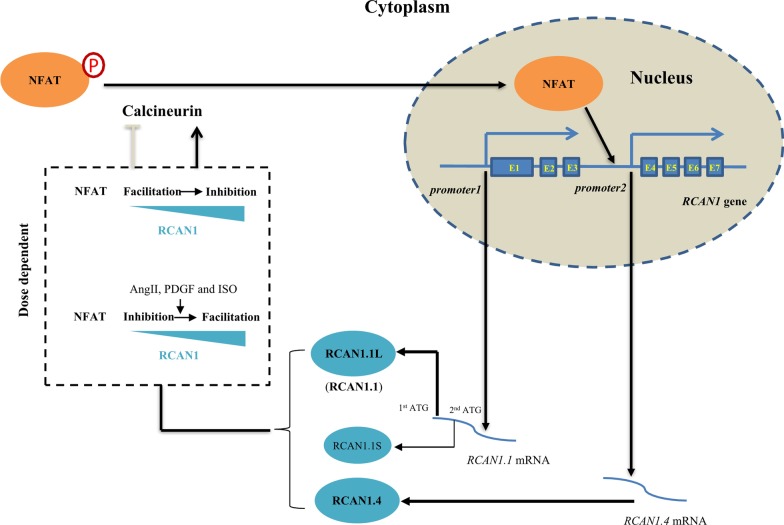Fig. 1.
The bidirectional role of RCAN1 in calcineurin/NFAT signaling pathway. The RCAN1 gene consists of seven exons (presented as E1–E7). RCAN1.1 (E1, E5–E7) and RCAN1.4 (E4, E5–E7) are the two major transcripts, which are generated by alternative promoter using and splicing. Two isoforms, RCAN1.1L (252 amino acids) and RCAN1.1S (197 amino acids), are generated from RCAN1.1 by alternative usage of two in-frame translational start codons (presented as 1st ATG and 2nd ATG). As RCAN1.1L is the dominant isoform of RCAN1.1, hence RCAN1.1 hereafter stands for RCAN1.1L. RCAN1.4, another relative abundant isoform is translated from RCAN1.4. Each isoform participates in calcineurin-NFAT signaling by regulating calcineurin-mediated NFAT dephosphorylation, while active NFAT facilitates RCAN1.4 transcription. RCAN1 plays complex roles in the regulation calcineurin-NFAT signaling in a dose-dependent manner. Low level of RCAN1 is essential for the maintenance of calcineurin-NFAT signaling while high dose of RCAN1 exerts inhibitory effect on calcineurin-NFAT signaling. However, in response to AngII, PDGF or ISO treatment, RCAN1 functions as an inhibitor of calcineurin-NFAT signaling when its level is low, but as a facilitator of calcineurin-NFAT signaling when its level is high. The arrowhead stands for positive regulation, while T-shaped end stands for inhibition. P within the red circle represents the phosphorylation form of NFAT (inactive form)

